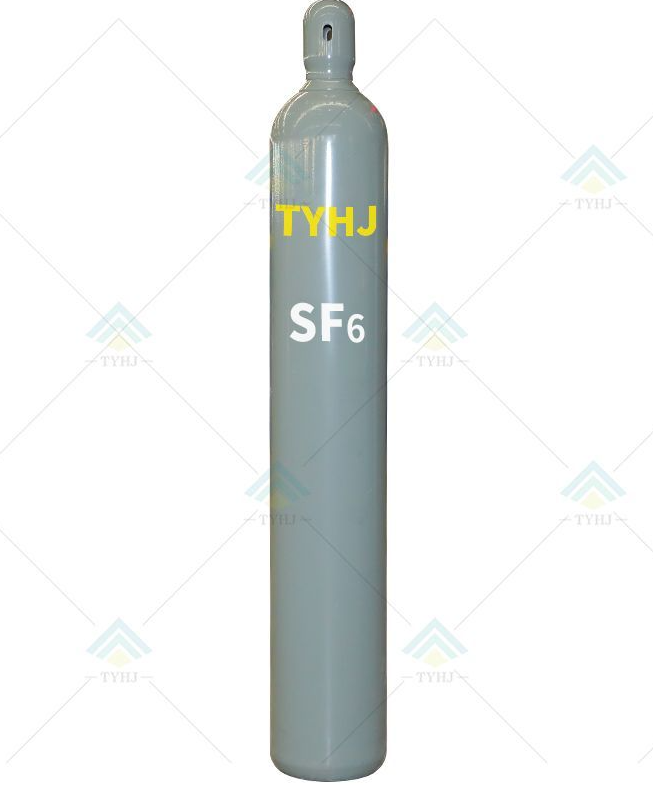In the realm of specialty gases, sulfur hexafluoride (SF6) stands out as a remarkable compound with a range of unique properties and applications. This comprehensive guide takes you on a journey through the various aspects of SF6, from its characteristics and advantages to its role in industries and the environment.

Sulfur hexafluoride, known by its chemical formula SF6, is a colorless, odorless, and non-flammable gas with exceptional electrical insulation properties. Despite its minimal presence in the Earth's atmosphere, SF6 has garnered significant attention due to its diverse applications and the environmental challenges associated with its use.
Properties of SF6: The Exceptional Attributes
SF6 is renowned for its remarkable properties, making it an invaluable asset in various industries. Its high dielectric strength, thermal stability, and insulating capabilities have led to its widespread adoption in electrical equipment, ranging from transformers to circuit breakers.
Applications Across Industries: SF6's Versatility
The unique properties of SF6 render it indispensable in a plethora of industrial applications. It serves as a gaseous dielectric medium in high-voltage electrical equipment, ensuring efficient power distribution and insulation. Additionally, SF6 finds utility in the medical sector for retinal detachment surgery and as a contrast agent in medical imaging.
Environmental Concerns: The Need for Caution
While SF6 offers numerous advantages, its environmental impact has raised concerns. Being a potent greenhouse gas, SF6 has a high global warming potential, contributing to climate change. Mitigating these concerns requires a collective effort to minimize SF6 emissions and explore alternatives.
Regulatory Measures: Addressing Environmental Impact
Governments and organizations worldwide are taking steps to regulate and reduce SF6 emissions. The European Union's F-Gas Regulation and the Environmental Protection Agency's (EPA) initiatives in the United States aim to curb the use and emissions of SF6, encouraging the adoption of more sustainable alternatives.
Future Outlook: Innovations and Alternatives
The growing environmental awareness has spurred research into alternative gases and technologies that can replace SF6 without compromising performance. Emerging alternatives like g³ (g cubed) promise similar or better electrical properties while significantly reducing environmental impact.
FAQs About SF6 Specialty Gas
Q: Why is SF6 used in electrical equipment?
A: SF6's exceptional dielectric properties make it an ideal insulating medium in high-voltage electrical equipment.
Q: What industries rely on SF6?
A: SF6 finds applications in industries such as power generation, medical, and semiconductor manufacturing.
Related articles:What Are the Benefits of Using PP Fibers in Concrete?Is liquid adhesive strong?THE POWER OF VITAMIN C: A COMPREHENSIVE GUIDE TO ITS BENEFITSHow is Methyl Acetate produced in a plant?What Does Praziquantel Treat in Animals?5 Uses of BenzocaineWhat is hydroxypropyl methyl cellulose used for?Q: How does SF6 contribute to climate change?
A: SF6's high global warming potential attributes to its role as a greenhouse gas.
Q: What are sustainable alternatives to SF6?
A: Alternatives like g³ are being explored due to their lower environmental impact and similar electrical properties.
Q: How can industries minimize SF6 emissions?
A: Industry-wide efforts include improving leak detection, implementing recycling programs, and adopting alternative technologies.
Conclusion: Balancing Advantages and Environmental Responsibility
The multifaceted nature of SF6 specialty gas showcases both its advantages and the environmental responsibility associated with its use. While SF6 continues to play a crucial role in various sectors, it is imperative for industries to explore sustainable alternatives and adopt measures that mitigate its impact on the environment. Balancing technological progress with environmental consciousness will pave the way for a greener and more responsible future.
Related Products:
CO Specialty Gas
Methane Gas
Related articles:What is the difference between Ivomec and Ivermectin?what is cas 1121-84-2 2h pyran 2 one tetrahydro 4 methylThe Versatility of 30% Salicylic Acid: Applications and BenefitsEthyl Acetate Production Plant: Unveiling the Process from Start to FinishWhat is a pharmaceutical intermediate?Application of SBR Latex for Artificial TurfWhat is the use of zinc sulfate in agriculture?





Comments
0Related Articles
By Hou
56
0
0
By May
105
0
0
By Geoff
101
0
0
By Geoff
103
0
0
By Marina
104
0
0
By Liang
102
0
0
By Ruby
121
0
0
By Hou
205
0
0